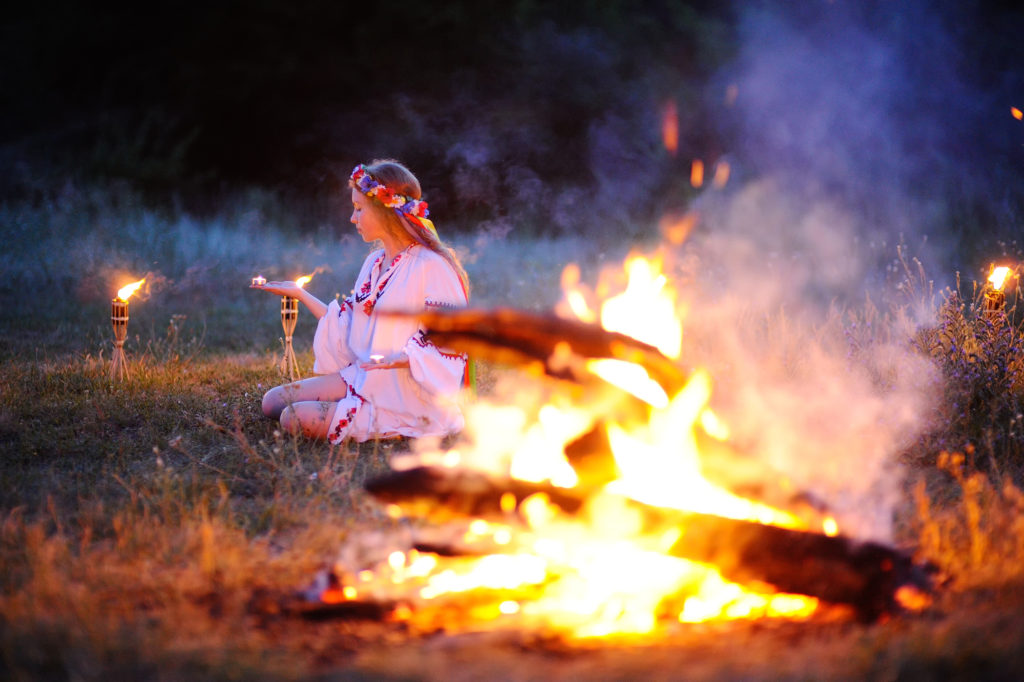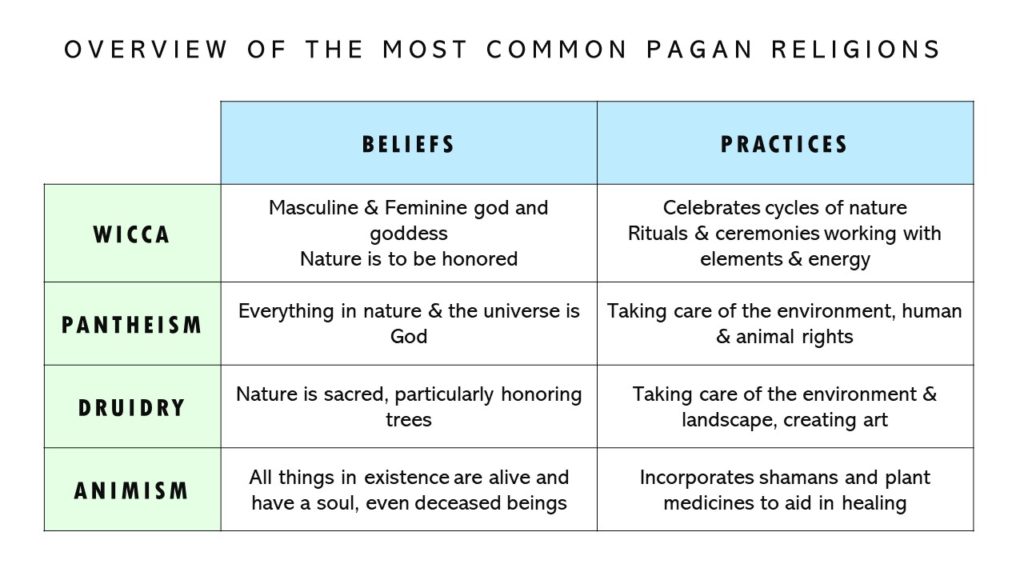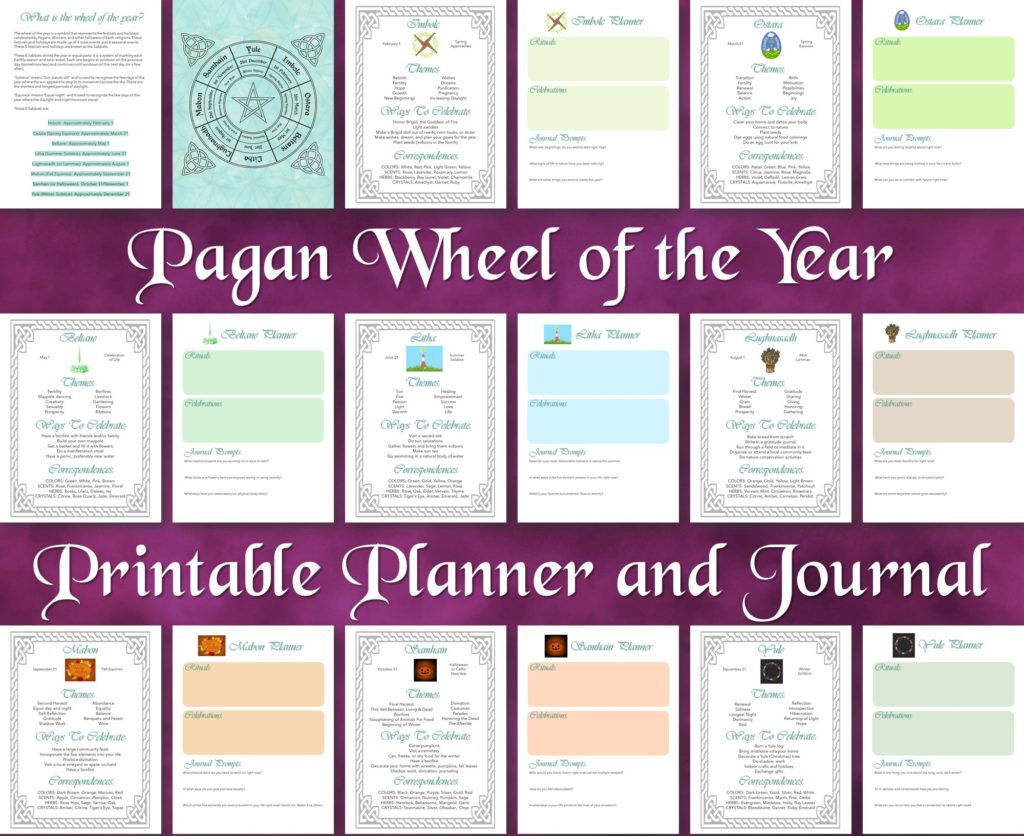
Spirituality is one third of the holistic wellness trifecta of body, mind, and soul. Those that claim to be “spiritual but not religious” account for over 20% of the population in the United States. Many people (including myself) have moved away from organized religion and have adopted a more nature-based approach to spirituality. (Learn the difference between spirituality and religion here)
In this article, I’ll be covering the basics of some of the main religions that focus on nature. I hesitate to call these “religions”, though, because these are not typical religions that most people are born into and follow, but it’s a term everyone is familiar with. Typically, a religion involves worship of a deity, whether that is God or a real human that lived in the past. By contrast, these nature-based religions don’t center around one person or God in the Christian sense. They could more accurately be described as viewpoints.
Audio/podcast version:

When people move away from an organized religion, they often turn to nature because it’s the one thing they can experience directly. There is no faith required, since the proof is all around us. It doesn’t require going to church, since anywhere in nature can be our church. Humans are made of the same elements nature is made of, and recognizing this often helps people feel a connection to nature that most religions often fail to provide.
Table of Contents
Paganism 101
Paganism is the main broad term used to describe a polytheistic Earth-based religion. They generally honor nature, having different gods and goddess for every aspect of nature. Since Paganism is so broad, all the religions covered in this article would fall under this category.
So when you hear the word “Paganism”, remember it encompasses anyone who does not believe in a monotheistic religion such as Christianity. In fact, the word “Pagan” was first used by early Christians when referring to anyone who was not a Christian.

It’s important to note that these religions are not mutually exclusive, which means one can practice one or all of these in various forms. You can practice rituals from one religion while sharing the beliefs of another. They are very interchangeable, so the lines between them are very blurred. They all hold a reverence for the Earth, so this helps in keeping them all closely connected.
The 4 Most Common Earth-Based Religions

Wicca
Wicca is probably the most popular sub-religion under this umbrella. It has only been around since the 1950’s, started by a man named Gerald Gardner. What makes Wicca unique is it’s focus on magic, which is really just working with tools and energy to bring about positive changes that start within the mind.
Wiccans put great importance on the elements of nature, the moon phases, multiple gods and goddesses, and honoring the Earth. They do not worship Satan or put spells on people, contrary to what people traditionally have believed about witches.
Pantheism
Pantheism is the belief that all things in nature are God; trees, water, dirt, rocks, animals, humans; everything! There was no separate creator; all is God as one cohesive unit. Unlike Wiccans, Pantheists generally don’t practice witchcraft.
Druidry
Druidry is another religion based on the Earth and nature. It focuses on the environment, ancestors, and the landscape, particularly trees and especially oak trees. They also focus more on creativity and the arts.
Animism
Animism is another similar belief system, not necessarily a religion. It is the belief that all things (“alive” and “dead”) are alive and have a soul. Animists like to work with the spirit world, often incorporating shamans to help facilitate healings and communicate with other life forms and those who have passed on to other realms.

I personally believe in all of these belief systems/religions, however I don’t actively engage in all of their practices. A big part of these religions are having freedom. Many practioners are drawn to these because of the relatively loose rules.
This means that you can declare yourself a Pagan, a Wiccan, a Pantheist, or an Animist anytime you wish. Calling yourself a Druid, however, does require moving up through various levels of education. You can learn more about druidry here.
How You Can Get Started Practicing Nature-Based Spirituality
Here are a few great simple ways to start a spiritual practice based around nature:
- Grab a journal and a candle, and head outside to a spot where you feel comfortable, preferrably away from people or traffic. Secluded in a grove of trees is perfect! Journal your thoughts, set your intention to connect yourself with your surroundings, and meditate on the subtle energy all around you!
- Go outside at night when the moon is full or the sky is clear. Lay on the ground, dance, or walk, whichever you prefer. Contemplate the moon, stars, Earth, and the Universe.
- Start honoring the phases of the moon. Simply being aware of each one as they change from one to the next will help you become more attuned to the moon’s energies.
- Start celebrating the 8 Pagan Wheel of the Year holidays and festivals. These form the basis of celebration for most nature-based religions. These include the solstices, equinoxes, and turning of the seasons. Living in alignment with the cycles of the seasons is very foundational to all of these religions. I have a printable planner/journal just for this! The Pagan Wheel of the Year Holidays and Festivals planner/journal guides you through them, and you can download it on Etsy by clicking the link above or the image below.

18 Comments
Comments are closed.